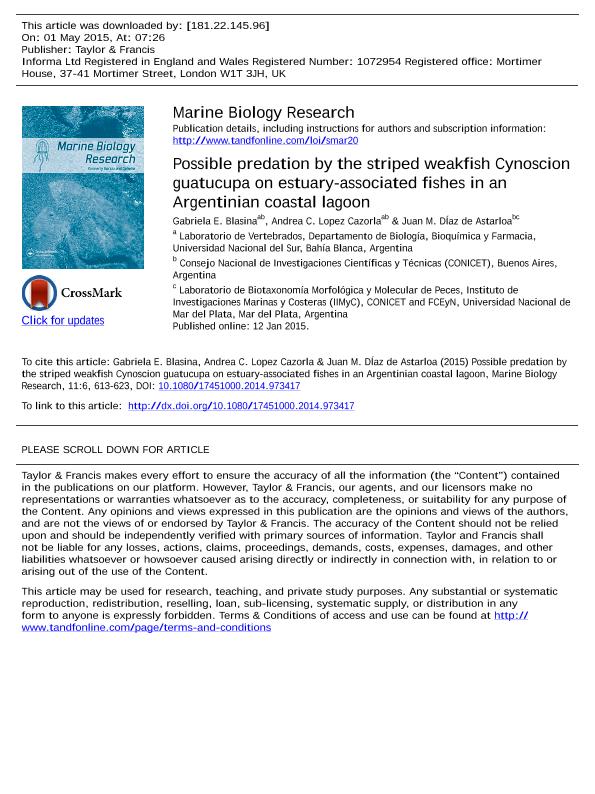Artículo
Possible predation by the striped weakfish Cynoscion guatucupa on estuary-associated fishes in an Argentinian coastal lagoon
Fecha de publicación:
05/2015
Editorial:
Taylor & Francis As
Revista:
Marine Biology Research
ISSN:
1745-1000
Idioma:
Inglés
Tipo de recurso:
Artículo publicado
Clasificación temática:
Resumen
Cynoscion guatucupa is one of the most important coastal fishery resources of Argentina and Uruguay, with both juveniles and adults being recorded in Mar Chiquita coastal lagoon, a shallow-water estuarine lagoon in Argentina. Cynoscion guatucupa enters and exits the lagoon following tidal cycles, with residence time within the lagoon lasting only for the duration of a tidal cycle. The main objectives of this study were to determine the diet composition of Cynoscion guatucupa captured in the lagoon, and to determine if different size-classes of this species differentially utilize available food resources during their residency within the coastal lagoon. The diet of 511 specimens of C. guatucupa was analysed. The most important prey item in %IRI was Peisos petrunkevitchi, followed by juvenile teleosts including those of Micropogonias furnieri, Odontesthes argentinensis and Mugil platanus. Cynoscion guatucupa enters the lagoon to feed on a variety of invertebrates as well as juvenile teleost fishes. Diet composition showed ontogenetic changes: smaller individuals predominantly consume crustaceans, and as size increases they begin to prey more on teleosts, with the largest fishes specializing on fish. The present study reinforces the role of estuaries for marine fishes as both feeding grounds for juveniles and adults and as refuge areas for juveniles. Furthermore, this study also highlights the importance of food habit studies for understanding the trophic ecology of fishes and estuarine food web dynamics.
Archivos asociados
Licencia
Identificadores
Colecciones
Articulos(IADO)
Articulos de INST.ARG.DE OCEANOGRAFIA (I)
Articulos de INST.ARG.DE OCEANOGRAFIA (I)
Citación
Blasina, Gabriela Elizabeth; Lopez Cazorla, Andrea Cecilia; Díaz de Astarloa, Juan Martín; Possible predation by the striped weakfish Cynoscion guatucupa on estuary-associated fishes in an Argentinian coastal lagoon; Taylor & Francis As; Marine Biology Research; 11; 6; 5-2015; 613-623
Compartir
Altmétricas




